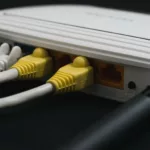Like most busy professionals, you probably do a lot of work on the move thanks to your Android. Thanks to the thousands of apps at your fingertips, you can easily create, download, or edit different types of files. Whether someone needs you to sign off on a document or you want to record a voice memo for yourself, your Android lets you do it all.
But what if you want to view those same files from the comfort of a larger screen? Or edit a document while using a full-sized keyboard? Maybe you just like the peace of mind of backing up your files but don’t want to use the cloud. All of these predicaments can be solved with an easy procedure known as an Android file transfer. Here’s how to do it.
Transferring Android Files Using a USB Cable
The first method involves using a USB cable. One end fits into your Android, and the other end plugs into any computer. This physical link between the two devices allows you to transfer files without an Internet connection, which makes it ideal for huge files and/or slow connections.
Once you have connected your Android with your computer via the USB cable, unlock your phone, touch the top of the Android screen and swipe down. You should see a notification that tells you your Android is currently charging. Tap this and select “File Transfer” from the options. If you want to specifically transfer photos, you can select the “Photo Transfer” option instead.
Then, access the File Explorer and look for a new device in your E: drive. Clicking on this should show you all of the files currently stored on your Android. Select the ones you want to move, and either drag them to a new location on your computer, or right click and choose the “Move” feature. Then, select a destination folder and confirm.
Perform an Android File Transfer with an App
What if you’ve lost the USB cable that connects to your laptop? Or you simply don’t have it with you and really need to transfer a file to meet a deadline? Fortunately, apps like iSkysoft Toolbox – Switch make it super easy to browse your Android files from a computer. In fact, it lets your Android double as a flash drive or external hard drive, and even syncs music (as well as all other files, of course) across both devices.
All you need is an Internet connection and the app to get started. Check out this Android transfer guide for full details on everything you can do with wireless syncing.
Which Method Is Best for You?
Not sure which method to use? You may not actually have a choice if your Android or computer runs on an outdated operating system. Apps only support certain operating systems on both ends of the transfer, meaning that your Android likely needs to be 8.0 or higher. However, a USB cable won’t fail you in the same way. And because browsing your Android files with a USB is just like opening a flash drive, it works on all PCs.
Now that you know how easy it is to transfer files from your Android to your computer, you never have to worry about losing your mobile files. Once you’ve completed the process a few times, you can back up your Android in a matter of seconds.








